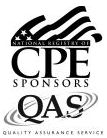Oil and Gas Accounting (CPE Course)
CPE Credit: 9 hours
Course Type: Downloaded PDF materials with online test
Price (with PDF Textbook): $65

Course Description
Oil and gas operations have some of the most unique accounting issues found in any industry. Oil & Gas Accounting
delves into acquisition, exploration, development, and production activities, covering many industry-specific accounting issues. Topics covered include the successful efforts method, full cost method, reserve reporting, the unit of production method, severance taxes, take-or-pay arrangements, transfers of mineral interests, and joint interest accounting, as well as industry-specific controls that should be installed. In short, this is the essential oil and gas desk reference for the accountant.
Author:Steven Bragg
Course Number: AC1120
Table of Contents
Chapter 1. Overview of Oil and Gas Operations
Chapter 2. Overview of Oil and Gas Accounting
Chapter 3. Successful Efforts Method
Chapter 4. Full Cost Method
Chapter 5. Depreciation, Depletion, and Amortization
Chapter 6. Accounting for Production Costs
Chapter 7. Revenue Accounting
Chapter 8. Reserve Reporting
Chapter 9. Transfers of Mineral Interests
Chapter 10. Joint Interest Accounting
Chapter 11. Interest Capitalization
Chapter 12. Asset Retirement and Environmental Obligations
Chapter 13. Asset Impairment
Chapter 14. Oil and Gas Disclosures
Chapter 15. IFRS Accounting for Oil and Gas
Chapter 16. Auditor Inquiries
Chapter 17. Accounting Controls
Learning Objectives
-
Recognize the various steps in the process of exploring for, developing, and producing on an oil and gas property.
-
Identify the different types of wells.
-
Identify the documentation used to record produced oil and gas.
-
Recognize the contents of a lease arrangement.
-
Define the different cost classifications associated with oil and gas activities.
-
Recognize the various types of production costs.
-
Describe the situations in which a joint operating agreement is used.
-
Define the contents of a lease database.
-
Identify the different classifications of exploration costs.
-
Recognize the accounting for all aspects of drilling a well and subsequent well operations.
-
Identify the indicators of sufficient progress in regard to assessing the viability of a project.
-
Differentiate between the successful efforts and full cost methods.
-
Describe the calculation process for the unit of production method.
-
Recognize the valuation rules relating to oil and gas inventory.
-
Specify the contents of a run ticket.
-
Identify the information contained within a division order.
-
Describe the accounting for producer gas imbalances.
-
List the criteria used to report proved oil and gas reserves.
-
Recognize the indicators that can trigger a review of reserves.
-
Recognize the accounting variations available when recording a nonmonetary exchange.
-
Recognize all aspects of the accounting for joint interest arrangements.
-
Describe the circumstances under which interest can and cannot be capitalized.
-
State the situations in which asset retirement obligations can be deferred.
-
Specify the rules used to determine the expected present value of an asset retirement obligation.
-
Recognize the accounting for environmental contamination costs.
-
Describe the circumstances under which impairment testing should be conducted, as well as the rules for doing so.
-
Specify the situations in which an asset can be classified as held for sale.
-
Describe the disclosure requirements for reserves.
-
Identify the appropriate costing to be used for exploration costs associated with mineral resources, as well as the indicators for when impairment testing should be conducted on mineral resources assets.
-
Recognize the audit activities in which an auditor will be engaged when auditing an oil and gas firm.
-
Recognize the different types of controls that are specific to an oil and gas firm.
Level: Overview
Instructional Method: QAS Self-Study
NASBA Category: Accounting
Prerequisites: None
Advance Preparation: None
Latest Review Date:April 2024
Program Registration Requirements: Click on "Purchase Course" near the top of this page to pay for and access the course. You will then be able to download the course as a PDF file, then take an on-line examination, and then download a certificate of completion if you pass the examination.
Program Refund Policy: For more information regarding administrative policies concerning complaints, refunds, and other matters, see our policies page.

AccountingTools, Inc. is registered with the National Association of State Boards of Accountancy (NASBA) as a sponsor of continuing professional education on the National Registry of CPE Sponsors. State boards of accountancy have the final authority on the acceptance of individual courses for CPE credit. Complaints regarding registered sponsors may be submitted to the National Registry of CPE Sponsors through its website: www.nasbaregistry.org .
The NASBA sponsor identification number for Accountingtools, Inc. is 115881.

AccountingTools is an IRS Approved Continuing Education Provider. We are compliant with the requirements for continuing education providers (as described in sections 10.6 and 10.9 of the Department of Treasury’s Circular No. 230 and in other IRS guidance, forms, and instructions). Our IRS Approved Continuing Education Provider number is 72821.

